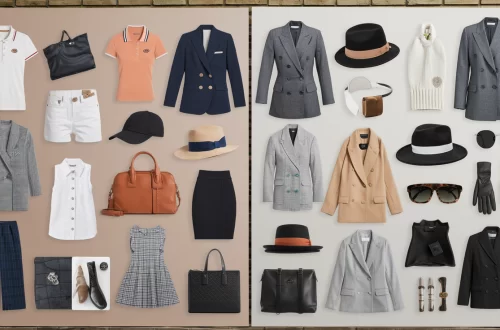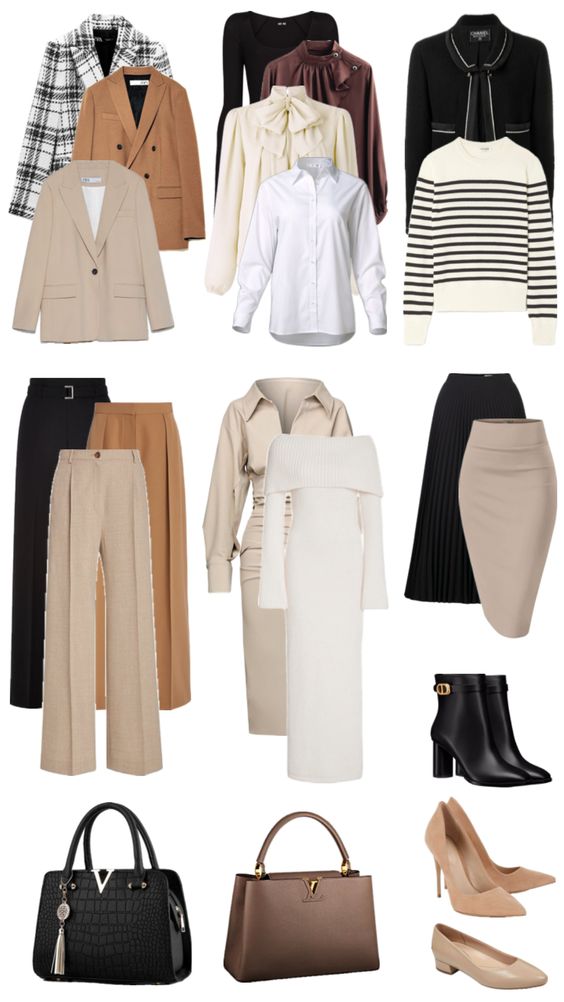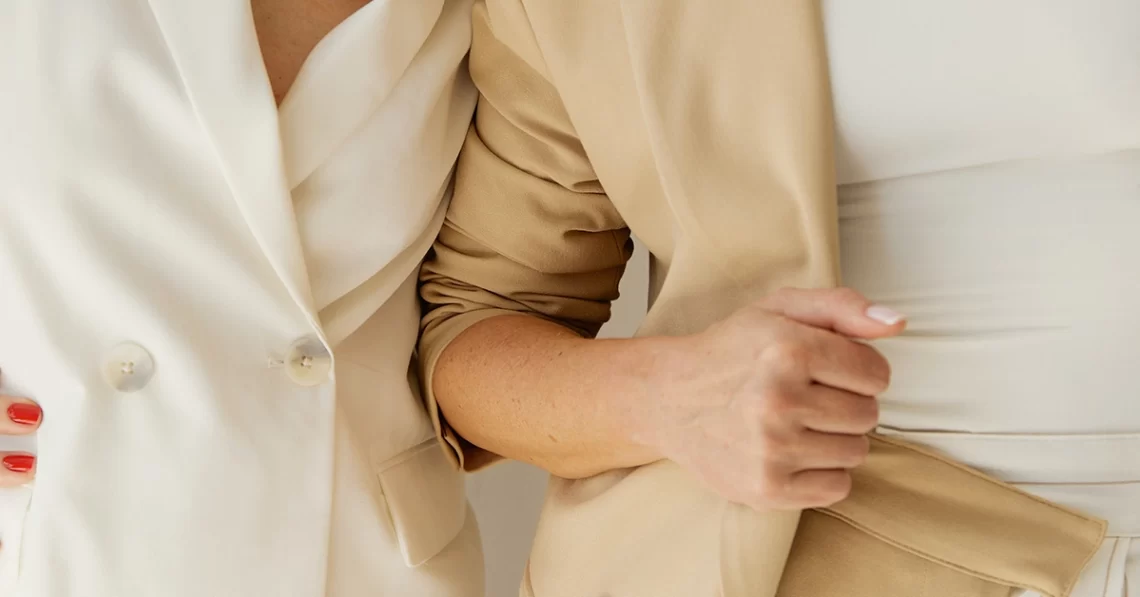
Decoding Dress Codes: Business Casual vs. Smart Casual for Women
Business Casual vs. Smart Casual: these styles prove that in the ever-evolving world of fashion and office attire, the lines between dress codes can sometimes become a bit blurry.
Deciphering the difference between business casual and smart casual can be a daunting task, especially for women. Understanding these dress codes is essential, however, for creating a professional yet stylish wardrobe that suits the workplace and helps enhance your career.
In this guide, we’ll decode the nuances of business casual and smart casual, helping you make informed choices for your work attire.
Table of Contents
ToggleFirst, let’s delve into some theory: What is Business Attire?
Business attire is a general term used to describe clothing that is considered appropriate for the workplace. It sets the tone for your presence in the workplace, showcasing your ability to navigate the corporate world effectively.
The specific definition of business attire can vary depending on the company culture, industry, and even the individual’s position within the company. That’s why we can delineate four different styles that can fit as Business Attire: Casual, Smart Casual, Business Casual, and Business Professional.
While Casual is the most relaxed and Business Professional is the most conservative, and Business Casual vs. Smart Casual fall in the middle, balancing comfort and formality, often causing them to overlap.
The most similar and most common attires: Business Casual vs. Smart Casual
Business casual and ssmart casual are two of the most common dress codes found in workplaces today. Both styles allow for a degree of flexibility and personal expression while maintaining a professional appearance.
Understanding the fine distinctions between them is crucial for anyone looking to navigate the world of office fashion with finesse; however, it is essential not only to know the definitions but also to inquire with your HR office about your company’s dress code and culture. In fact, these two terms are frequently used interchangeably or misunderstood.
When in doubt, always ask as many questions as you can. In the meantime, opt for more conservative outfits; it is always better to err on the side of caution and dress more formally than to be underdressed.
@missfernandez__ Check out other outfit inspo videos I’ve put together on @SEEK (they may or may not also include dark chocolate 😆) #businesscasual #businessoutfit #sponsored ♬ original sound - Kristine Fernandez
The Differences
Business casual and smart casual share some common ground: they are both professional yet relaxed dress codes, with nuanced differences setting them apart. These variations lie in the level of formality, the degree of relaxation, and the overall vibe each dress code exudes.
In general, we can affirm that:
Business Casual is about dressing down from formal suits and business professional attire; Smart Casual is about dressing up from casual clothes, like jeans and t-shirts.
This is the reason why smart casual clothes are more frequently bought and utilized for life outside of work, and they are typically styled in well-put-together outfits when worn at the office. In contrast, business casual clothing is often a component of business professional attire, like pantsuits, shirts, or professional dresses, and it’s styled in more comfortable ensembles.
The Common Ground
Now that we’ve made some cleareness about the differences, we can add that Business Casual and Smart Casual share certain common elements that include:
A Respect for Cleanliness: Both dress codes expect individuals to wear clean, well-maintained clothing, which is free from wrinkles and stains;
A Sense of Sophistication: Regardless of the dress code, a sense of sophistication is inherent in both. It’s about projecting a professional image that reflects competence and respect for the workplace;
Well-Groomed Appearance: Personal grooming, including neat hair, minimal makeup, and well-kept nails, plays a significant role in both business and smart casual attire.
@charlottexbeer_ Smart casual vs business attire - what’s the difference? 💫 #smartcasual #businessattire #corporatestyle ♬ original sound - Charlotte 🕊
Focus on Business Casual: Where Professional Meets Comfort
Business casual strikes the perfect balance between formal and comfort. It’s the go-to dress code for many workplaces, offering a professional but modern appearance. When crafting a business casual look, keep these key elements in mind:
1. The Foundation – Tops and Bottoms: Opt for tailored blouses, button-down shirts, or simple tops in solid colors or subtle patterns. Paired with slacks, dress pants, or knee-length skirts, you’ll create the foundation of a business casual outfit.
2. Versatile Footwear: Heels, flats, or loafers work well for business casual, depending on your comfort and the nature of your work. Shoes should be well-kept and coordinate with your outfit.
3. Layers and Accessories: Adding a blazer, cardigan, or statement necklace can elevate your look. Just be mindful not to over-accessorize. Simplicity is key.
4. Keep It Professional: While you have room for personal style, remember to maintain a polished and professional appearance. Avoid overly casual items like distressed jeans or overly revealing tops.
Pieces you can’t miss for Business Casual outfits:
- Blouse or button-down shirt;
- slacks and trousers;
- pencil skirt below the knee;
- pencil dress dress below the knee;
- cardigan in black or neutral colors;
- blazer;
closed-toe shoes with a heel.
When and where is Business Casual appropiate?
- Generally speaking, Business Casual is indicated for:
- Meeting with a client (especially if it’s the first time)
- Giving a presentation to a team
- Attending a conference
- Interviewing for a job
- Networking events
- Semi-formal events (like cocktail parties or casual celebrations)
- Conferences and Seminars.
- Working in a traditional office settings that don’t always require Business Professional outfits.
Here are some industries that typically allow Business Casual attire:
Corporate Offices: Business casual attire is a common dress code in corporate offices, particularly in departments that do not require formal business suits. It offers employees the flexibility to look professional while feeling comfortable.
Banking and Finance: Many financial institutions, including banks and investment firms, adopt a business casual dress code for roles that don’t involve client-facing interactions requiring formal business suits.
Legal Services: In the legal industry, business casual attire is often permitted, especially for legal professionals not attending court hearings or client meetings. It provides comfort for lawyers working long hours.
Insurance: Employees in the insurance sector frequently follow a business casual dress code, emphasizing professionalism and comfort for day-to-day office work.
Government: Many government agencies and public administration offices allow business casual attire for non-client-facing roles. It’s practical for civil servants working in various departments.
Retail Management: Managers in retail often follow a business casual dress code, combining professionalism with the practicality needed in customer service roles.
Human Resources: HR professionals typically wear business casual attire to create a welcoming and approachable environment for employees.
Consulting: Management and business consulting firms often adopt business casual attire, balancing professionalism and comfort for long hours of client work.
Healthcare Administration: Healthcare administrators, including hospital and clinic staff, frequently opt for business casual attire. It’s practical for office roles in healthcare settings.
Marketing and Advertising: Smart and stylish attire is common in marketing and advertising firms. Business casual outfits are suitable for both office work and client meetings.
Media and Journalism: Professionals in media and journalism, such as journalists, editors, and reporters, often wear business casual attire, which allows them to transition from the office to the field comfortably.
@nenaevans_ smart casual v business casual work outfits 🤍 #workwear #officefashion #businesscasual ♬ sonido original - SweahBABA
Focus on Smart Casual: Elevated and Relaxed
Smart casual is a dress code that offers more leeway in terms of personal style. It combines elements of sophistication with a relaxed feel. Here’s how to master the smart casual look:
1. Effortlessly Chic Tops: Smart casual outfits often feature stylish blouses, trendy sweaters, or well-fitted tops. Feel free to experiment with different textures and colors.
2. Bottoms with Flair: Smart casual permits various bottom choices, including dark jeans, chinos, or stylish skirts. These should be well-fitted but not overly formal.
3. Shoe Choices: Smart casual embraces both heels and fashionable sneakers. Choose footwear that complements your outfit and maintains a sleek appearance.
4. Add Statement Pieces: Smart casual is an ideal canvas for statement jewelry, scarves, or other accessories. These items can elevate your look and showcase your unique style.
5. Confidence is Key: Smart casual allows for more personal expression, so wear what makes you feel confident and stylish without going too casual.
Pieces you can’t miss for Smart Casual outfits:
Polo shirt or knit top;
- white, black or neutral, high-quality t-shirs (no prints or logos);
- chinos and trousers;
- skirts and dresses;
- jeans (no tears, fading or fraying), better if in a dark wash;
- wool sweater or cardigan
- blazers;
- sandals, loafers or sneakers.
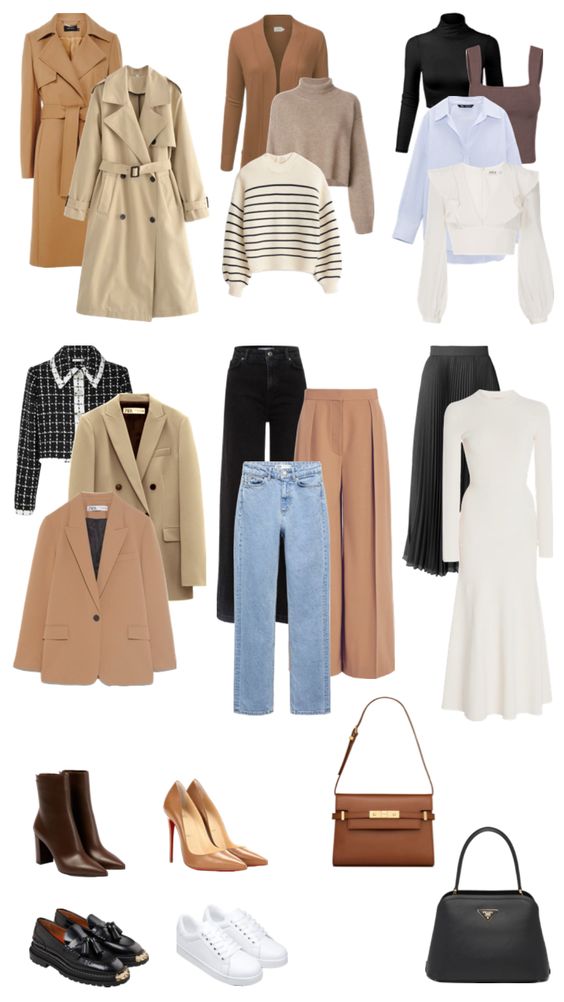
When and where is Smart Casual appropiate?
Generally speaking, Smart Casual is indicated for:
- Attending a networking event in creative or more informal industries
- After work events
- Business meetings that doesn’t require formal outfits
- Casual Fridays
- Travels
- Working from home
- Working in casual office settings.
Here are some industries that typically allow Smart Casual attire:
Tech and IT: The technology and information technology (IT) sectors are known for their relaxed dress codes. Employees often have the flexibility to wear smart casual attire, reflecting the innovative and creative nature of these industries.
Creative and Design: Industries such as graphic design, advertising, and fashion often embrace smart casual attire. Creativity and personal expression are highly valued, making smart casual outfits a popular choice.
Startups: Many startup companies, especially those in the tech and entrepreneurial sectors, encourage smart casual attire. The focus is on innovation and creativity, and the dress code typically aligns with the company culture.
Nonprofits: Many nonprofit organizations maintain a smart casual dress code to create a welcoming and approachable atmosphere. This attire is suitable for both office work and field activities.
Retail: Retail professionals who interact with customers may wear smart casual attire. It’s comfortable for long shifts and presents a polished appearance to customers.
Hospitality: The hospitality industry, including restaurants, hotels, and event planning, often has a smart casual dress code. It allows staff to look refined while ensuring they can move freely and serve guests effectively.
Education: In educational institutions, educators and administrative staff frequently wear smart casual attire. This dress code is appropriate for teaching, meetings, and other campus activities.
Keep in mind that within these industries, there may be variations in the dress code based on the specific company’s culture and requirements. Always consider your workplace’s expectations to ensure your attire aligns with their standards and values.
@darlene_style Business casual o smart casual? 🤍 #smartcasual #smartcasualoutfits #smartcasualstyle #businesscasual #businesswoman ♬ Cool Kids (our sped up version) - Echosmith
In Conclusion
In essence, business casual vs. smart casual dress codes reflect the modern professional’s desire for a blend of comfort, style, and sophistication. The key to navigating these dress codes lies in understanding the specific expectations of your workplace and industry, while also being mindful of your personal style.
Finding that perfect balance ensures you can confidently navigate the spectrum of office fashion, from the traditional business attire to a more relaxed and contemporary approach. So, next time you’re confronted with the choice between business casual and smart casual, you’ll know precisely how to strike the right chord between professionalism and style.
Desy Gregis
’m Desy, your new fashionista bestie. I’m an entrepreneur and business consultant living between Colombia and my home country, Italy. In this blog, we share news and trends about office fashion. I’m going to spill all the tea about how and why dressing for success is a fact.


You May Also Like

Fall-Winter Capsule Wardrobe: Mastering Workwear with 10 Fashion Experts
October 20, 2023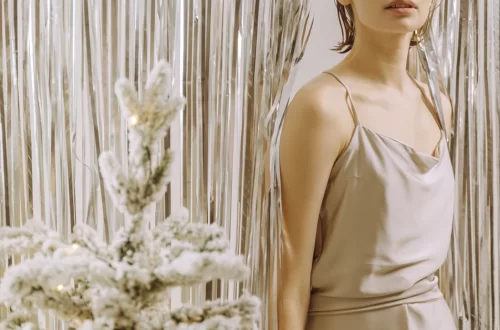
Elegant Company Christmas Party Outfit: Navigating Black-Tie Code
November 27, 2023